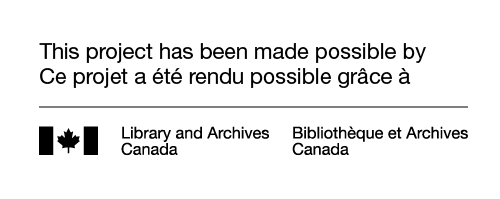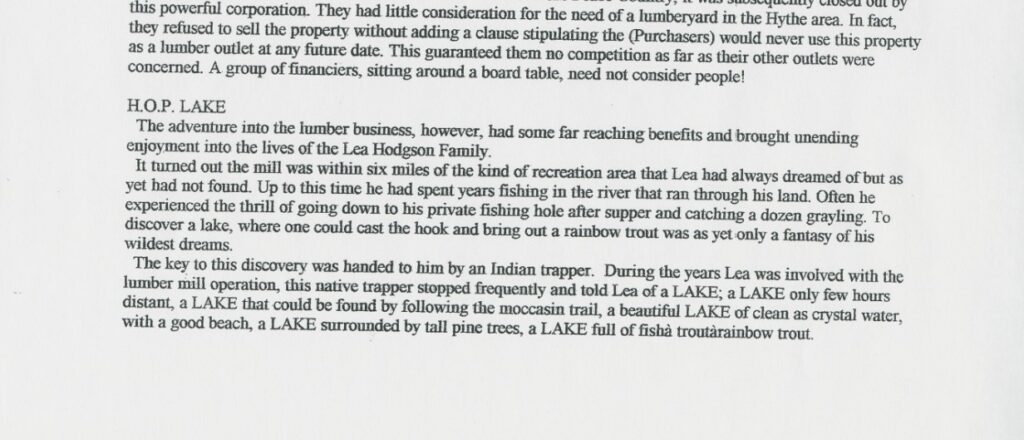Image: Lumber Mill on the Cutbank River and H.O.P. Lake, [2005] (SPRA 0630.06.14)
In 2020, the South Peace Regional Archives launched a major project, titled “Renaming the Past, Reclaiming Their Stories: Indigenous Records,” with financial support from Library and Archives Canada. The purpose of the project was to increase awareness of and access to Indigenous-related records within the Archives’ collections: by re-appraising, describing or re-describing, and digitizing more than 300 records in 70 fonds. This project is vital step in the Archives’ ongoing work towards Reconciliation with Indigenous peoples. We are now able to share these records with the community.
This week, we are showcasing a document from the Hodgson family fonds (Fonds 630). You can view of digitized copy of the document on Alberta on Record. The document appears to be part of a larger document as it is numbered page 28-30.
This textual record describes how Lea Hodgson and his father John left their farm in Hythe to create a lumber mill on the Cutbank River. It goes on the detail the history of the Mill. The second section in this document is called H.O.P. Lake. This section describes how Lea and his friends “discovered” H.O.P Lake (later, One Island Lake). According to the story, the key to the discovery was “handed to him” by an Indigenous trapper who frequently stopped in the area. The trapper had told Lea about a lake that “could be found by following the moccasin trail, a beautiful lake of clean as crystal water, with a good beach, a lake surrounded by tall pine trees, a lake full of [rainbow trout].” The lake was later surveyed by the British Columbia land offices and divided into private properties.
Like many resources of the South Peace. One Island Lake was known to Indigenous peoples long before the arrival of non-Indigenous trappers and settlers. Although this traditional knowledge is often unacknowledged in settler narratives, it is credited in this document: the lake was “as far as Lea knew…undiscovered by white man.” This story shows the continued knowledge-sharing from Indigenous peoples to non-Indigenous settlers well into the twentieth century. It also shows the establishment of private and government control over the rich natural lands which had been utilized by Indigenous peoples since time immemorial.

